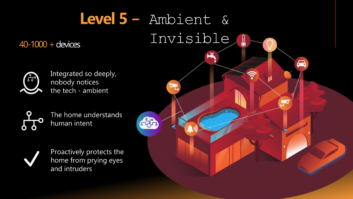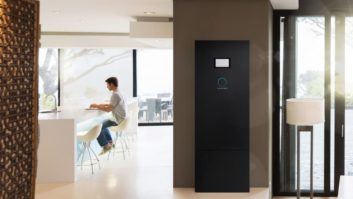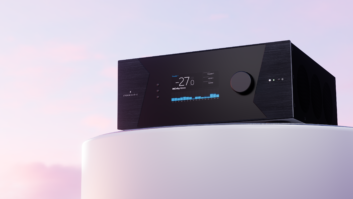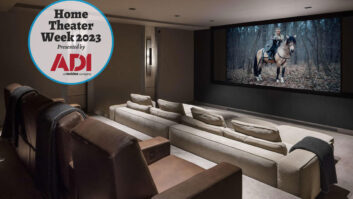As we approach the year 2020, I wanted to reflect on how far Ethernet-based networking solutions have spread throughout the home over the last two decades. In the early 2000s, I was asked by Jeff Hoover of Audio Advisors if I would continue writing his column for Residential Systems on networked products for the home. I had no idea that I would be writing this column for almost 20 years, but it’s a direct result of how far home networking has progressed and how important these products are to the success of companies like cyberManor in the custom installation channel.
The importance of the home network has elevated our status from just being a professional installer of audio/video equipment to becoming trusted advisors and integrators of almost all of the home’s technology — since most rooms in the home have at least one smart home device.
Also by Gordon van Zuiden: Considering Kitchen and Bath Technology
2019 begins cyberManor’s 20th year in business. Our business started in 1999 as a residential integrator selling home network solutions. At that time the only products we could connect to the home network were a couple of office PCs, maybe a network-attached storage device, and a printer. But the real value of this home network was when we could connect it to an always-on broadband internet connection instead of the dial-up, session-based, internet connections that were prevalent in homes in the latter part of the 1990s. Remember AOL?
When we connected these home-office-based networks to the internet everyone in the home office could simultaneously send and receive emails, surf the internet, print jobs to a shared printer, and store and retrieve data from a shared hard drive. These installations represented the birth of the residential network and spawned an industry that built the first residential routers, modems, switches, and wireless access points.

I remember going to CEDIA Expos in the early 2000s and looking at the back panels of audio/video products to see if any of them were starting to include Ethernet ports in addition to their existing serial ports. Slowly, over the course of that decade, I would see an increasing number of AV components such as receivers, DVD players, and set-top boxes have Ethernet ports that would connect these products to the home network and internet services.
The network that started in the home office was spreading into the home’s media rooms. Companies such as Sonos, Kaleidescape, and Control4 were born, engineering whole-house audio, video, and control platforms that were designed to communicate over Ethernet and provide content and control throughout the home over this network transport protocol. The need for centralized racks with matrix-switched analog equipment began to be replaced with network switches that could easily move digital content from internet and local sources located anywhere in the home to anywhere else in the home. The wired architecture of our installations had fundamentally changed, and we now had a handful of robust network-based AV solutions to meet the distributed audio, video, and control needs of the entire home.
The current decade has seen an exponential growth in the number of networked devices and companies in the home. Today, every room inside and outside the home potentially may have several networked devices. The homes that had 3-4 networked devices in their entire home a little over a decade ago now have over a hundred devices from a wide variety of companies. The small 4-port 10 Mbps per second switch that we installed in the early 2000s is now a 48- to 96-port gigabit switch used to connect devices that are rapidly streaming video, music, data, and control information throughout the home and back and forth to the internet cloud.

Almost every electronic product in the home now can be connected to the network backbone over wire or wirelessly. Products that weren’t smart are becoming smart. Kohler and Moen now have smart showers that eliminate the need for a manual hot and cold water mixing valve, enabling the homeowner to set their preferred shower temperature by app control or by voice. Electronic, smart concert-quality pianos can now connect to the internet for music playback and play piano artist recordings in your home from the touch of your iPhone or iPad.
Our expertise now extends into every area of the home, both inside and outside. It is more critical than ever that we understand the power and communication needs of all of these connected products. For example, in new construction projects we install low-voltage wire to almost every window in the home because at some point the homeowner may be interested in providing either motorized shade solutions or film-based tinting solutions that can be easily controlled by voice or by touch. We install low-voltage wire to almost every exterior perimeter corner of the home to provide a connection for always on, high-resolution, network-connected security cameras. We are even recommending outlets by toilets, near shower plumbing, behind bathroom mirrors, and in hallway walls so that digital showers, toilets, and digital TVs or picture frames can be easily installed.
Want more stories like this delivered to your inbox every day? Then sign up for the free Residential Systems eNewsletter here.
As I reflect on how far we’ve come installing all these intelligent, networked products in the connected home, I realize that we have now set the table for the truly smart, connected home. This is the home we will be supporting over the next decade. The connected hardware is now in place for AI software to add true intelligence to the products that we use in our home that will personalize the home experience for each family member by time of day, by their activities, and location. This software will learn, get smarter, and download into our connected home’s infrastructure on a daily basis. Voice control will get better, touchscreens will become more intuitive, entertainment content will become more personalized, our electrical utilization more efficient, and the quality of longer lifespans at home will improve.
This is truly an exciting time to be a home technology professional. Now we can truly begin to impress and satisfy our clients with customized levels of personalization and ease of use with AI-enhanced voice, graphics, and control solutions that continuously enrich all of home’s connected technologies.







